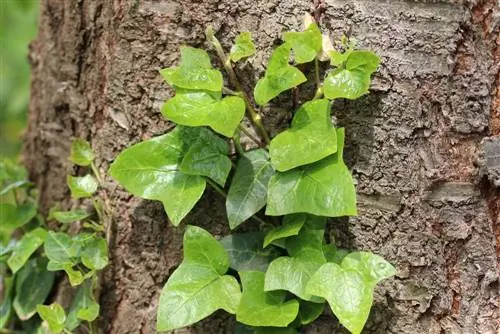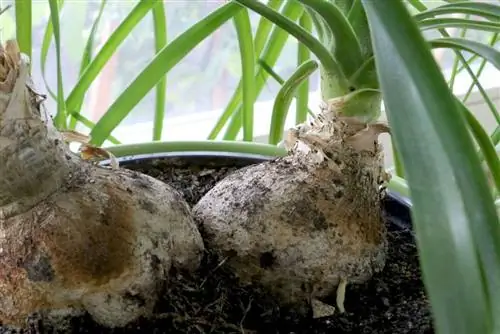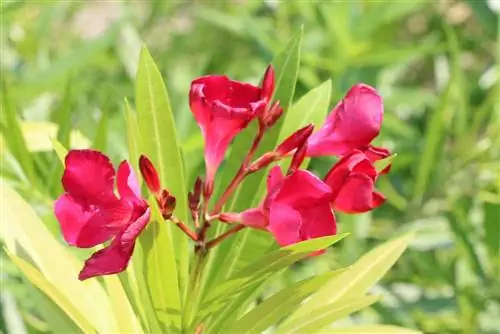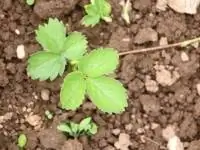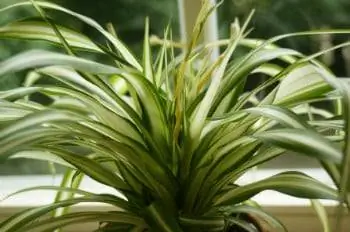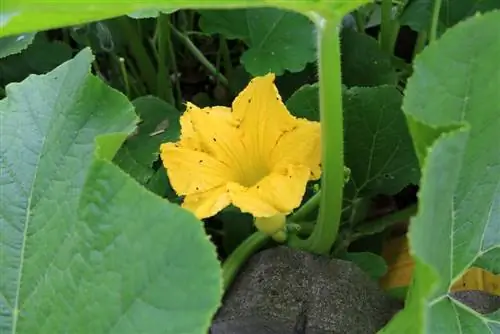- Author admin [email protected].
- Public 2023-12-17 03:39.
- Last modified 2025-01-24 12:45.
Offshoots can be grown from almost all plant species. In the following we would like to give you instructions on how to make offshoots yourself.
Advantages and disadvantages of cuttings
Growing plants from cuttings is much faster than growing them from seeds. The offshoot is a 100% clone of its mother plant. Therefore, only he althy and strong plants should be used for pruning. There is no germination phase, meaning crops can produce more yields.
When growing cuttings, important genetic information in the seeds is lost. This is particularly noticeable in the plant's yield. Therefore, plants grown from cuttings should be reproduced no more than two to three times. The cuttings are particularly susceptible to disease, especially in the early stages. Seeds, on the other hand, contain the full genetic information.
Which plants are suitable for raising offshoots?
Various plant species are suitable for growing offshoots. Depending on the type of plant, it is important to take the cuttings from the mother plant in the right place. A distinction is made between different types of investors. The most common cuttings are head cuttings, stem cuttings, leaf cuttings and wood cuttings. For many plants, top cuttings are taken. All young shoots of a plant are called head cuttings. Head cuttings can be grown from any tree, bush or spice plant that has branches. Cuttings can also be obtained from spice plants and vegetable plants.
The following plants, among others, are suitable for growing head cuttings:
- Bush roses
- Ivy
- Chrysanthemums
- Poinsettia
- Pepperoni
- Tomatoes
- Cucumbers
- Peppers
- Lavender
- Thyme
- Sage
Stem cuttings are suitable for propagating trees and other bush-like plants. Stem cuttings are taken from the plant near the trunk. Stem cuttings are much more difficult to grow than top cuttings, so this process takes more time. The following plant species can be propagated using stem cuttings:
- Yucca palms
- various houseplants
- Roses
- Dragon Tree
- Vegetable perennials
Leaf cuttings can be grown from all ground-level plants. Leaf cuttings grow very poorly and require a lot of care when growing. When growing leaf cuttings, important genetic information from the mother plant is lost because it is not stored in the leaves. The following plants are suitable:
- Spinach
- Lettuce
- stonecrop
- Lamb lettuce
- various stone plants
Propagate plants with cuttings is also popular. Cuttings are annual shoots of a woody plant. These are removed from the plant in autumn. The cuttings are stored in a frost-free place over the winter. These can be rooted in spring. The following are suitable for growing stem cuttings:
- Wood plants
- elderberry
- Raspberries
- Blackberries
- Sea buckthorn
- Willows
What is needed to raise cuttings?
In order to produce offshoots yourself, you need the following utensils in addition to a he althy shoot of the plant to be grown:
- clean, sharp knife, scalpel or razor blade
- Growing soil or rock wool
- Flowerpot
- Indoor greenhouse
- Root serum for example from Green House or Plagron
- a bright, not too mindless parking space
How are the cuttings grown?
The best time to separate cuttings from the mother plant is spring. First, a well-grown, 5 cm to 15 cm long, young shoot is taken from the mother plant. To avoid contamination at the interface, clean cutting tools that are as sterile as possible must be used. For thin shoots, a sterile scalpel is best. The lower leaves are then removed from the offshoot. The next step is to dip the cutting in root serum. It is recommended to put a small amount of the root serum in a separate container and to immerse the cuttings there. This prevents contamination of the remaining serum.
The cutting is now placed in the growing soil or in rock wool. The cuttings must be protected from drying out. We recommend using an indoor greenhouse. The greenhouse is particularly useful when larger quantities of cuttings are grown. Alternatively, a clear plastic bag can be used. After about 10 to 15 days, the offshoot can be placed in a larger container or outdoors.
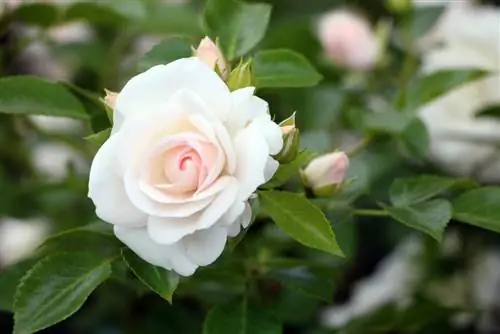
Another popular way to make cuttings yourself is to place the freshly cut cuttings in a glass of water. This should definitely be in a warm place. With this method you should cut off the offshoot at a 45° angle if possible. After about two to three weeks, enough roots should have formed to plant the offshoot. The cutting should first be planted in a small flower pot. As soon as the plant is robust enough, it can be planted outdoors.
What should you consider when raising offshoots?
As soon as the offshoot is separated from the mother plant, it is extremely weakened. Only use clean cutting tools. If possible, create a pleasant climate for your offshoots in a small greenhouse. Open the greenhouse several times a day to avoid heat build-up. If the offshoots are in an environment that is too humid, they can easily become moldy. Try to avoid excessive temperature fluctuations. Keep the soil as moist as possible. However, there should be no water in the containers. If there is a flower or bud on the cutting, it must be removed because flowers take too much energy from the cutting. The offshoot should have leaves that are as young as possible. All leaves on the lower part of the shoot must be removed. Replant the offshoot at least two to three times before putting it outdoors. Different sizes of flower pots allow for compact root growth. The following formula applies: the height of the plant is equal to the diameter of the flower pot.
If you work with sterile soil or rock wool, the cuttings should be fertilized after three weeks. You can use commercial flower fertilizer or organic fertilizer as fertilizer. Follow the dosage instructions on the packaging. Too much fertilizer is just as damaging to plants as too little.
Things worth knowing about pulling offshoots coming soon
Growing cuttings is particularly suitable for obtaining larger quantities of plants. You can save the costs for the seeds. The cuttings have a developmental advantage in contrast to seedlings. Growing cuttings certainly takes some practice. However, if you work carefully and follow the instructions for making your own, you will have a lot of fun with your offshoots.
- The term offshoot is a technical term from plant breeding. Pulling offshoots is a way of propagating plants.
- Another way of propagating plants is propagation by so-called lowering plants.
For the purpose of natural reproduction, some plants develop numerous offshoots in the form of shoots, which are initially still connected to the actual mother plant. These can be cut off to make so-called cuttings or offshoots. Rooted young plants then develop from these offshoots.
propagation boxes
For example, you can use so-called propagation boxes, whereby the color of the glass that you can put over the propagation box also plays an important role. Cuttings grow faster and better roots if the color of the glass is tinted, as is the case with brown or green glass, for example. The colored light, or the changed wavelength of the light, has a positive effect on the growth of the offshoots.
Mini greenhouse
Offshoots can also root faster by first placing them in a glass container - preferably tinted. After they have grown roots long enough, they can then be planted. Sufficiently rooted offshoots can also be planted directly in a new location. The planting site should be watered sufficiently beforehand to protect it from drying out.
Vegetative propagation
In order to carry out so-called vegetative propagation, you only need a few tools:
- a flowerpot,
- a water sprayer
- and growing substrate
When choosing the growing substrate, we recommend an airy, permeable substrate that stores water well and is germ-free.

